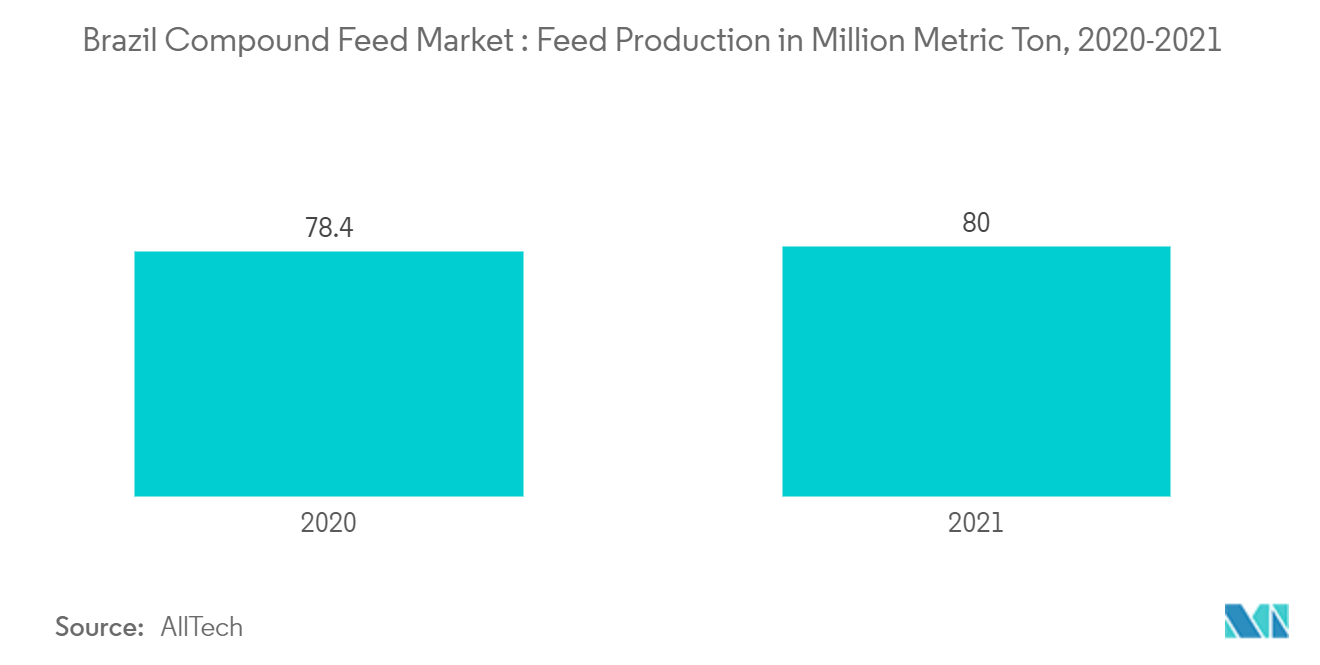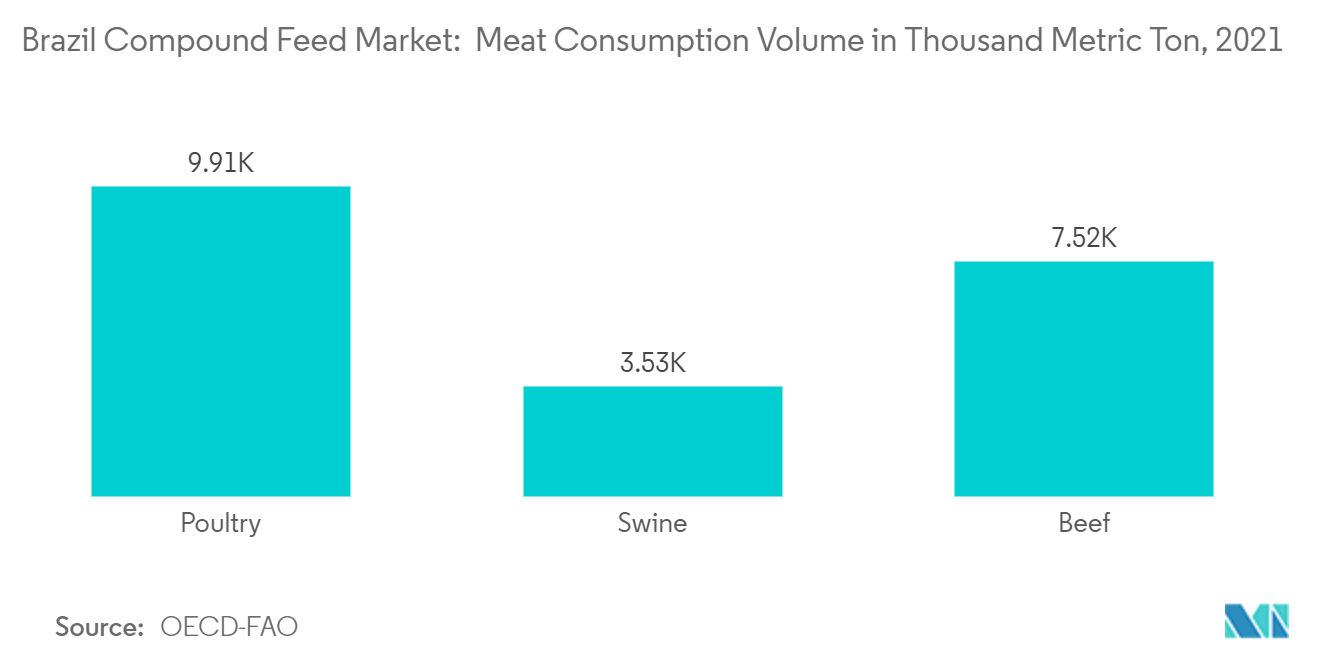Market Trends of Brazil Compound Feed Industry
This section covers the major market trends shaping the Brazil Compound Feed Market according to our research experts:
Demand for Quality Compound Feed to boost Balanced Diet in Animals
Brazil is well suited for specialist markets, such as feed additives and ingredients from the U.S. animal feed industry, owing to the country's expanding livestock, poultry, and aquaculture sectors. Feed additives and ingredients play a crucial role in reducing financial pressure and volatility while ensuring that the animals receive a balanced and nutritious diet when the price of maize and soybean meal rises and puts pressure on the animal feed sector.
According to the AllTech feed survey, In 2021, the total compound feed production is 80.0 million metric ton which increased from the previous year's production of 78.4 million metric ton in 2020. The compound feed market in Brazil faced a few challenges, such as increasing food costs, higher grain prices, and agricultural resources, which are initiated by the United States and China. The tie breaks between the United States and Brazil have affected the compound feed market in Brazil.
Demand for a high-quality compound feed from the livestock industry, due to increased industrial production of meat and dairy products has elicited the growth in the consumption of compound feed and feed additives. The raw materials used for compound feed production, such as maize, barley, and soybean, are used for human consumption and the production of ethanol. In this scenario, the feed industry competes with the food industry for raw materials. All above factors are driving the compound feed segment in the industry and will anticipated to grow during the forwcast period.

Increased Meat Consumption is driving Compound Feed Market
The demand for higher value and quality foods, such as meat, eggs, and milk, has increased compared to plant-originated foods, such as cereals, owing to the rising demand for greater food varieties and protein intake. These changes in consumption, together with sizeable population growth, have led to large increases in the total demand for animal products in many developing countries. Brazil, the world's top halal chicken exporter, sold 1.915 million ton of chicken meat to the Islamic market in 2021 which will boost the sector in the country in forecast period.
Chicken meat is the most exported from Brazil and is present in a total of 158 countries worldwide. The largest consumer of Brazilian chicken is now Saudi Arabia, which holds 17% of exports, followed by China with 11.5%. According to the Brazilian Association of Animal Proteins (ABPA), Brazilian production of chicken meat may grow by 1% in 2022 compared to 2021, reaching 14.5 million ton. In 2022, Brazilian poultry and pig meat production will increase, but exports will increase by 5% for broilers, while pork meat shipments may decline by 3%. Beef consumption in Brazil has dropped while consumers are focusing on cheaper protein alternatives such as chicken meat and eggs. Furthermore, this trend is expected to continue in the coming years.
Urbanization has led to increased demand for meat and milk products in cities compared to the rural areas. Cities have varied diets, rich in animal protein and fat. Studies showed that compound feeds have increased the weight of broilers by 30%, as compared to traditional feeds. Thus, the rising demand for Meat products may boost the global compound feed market, during the forecast period.

